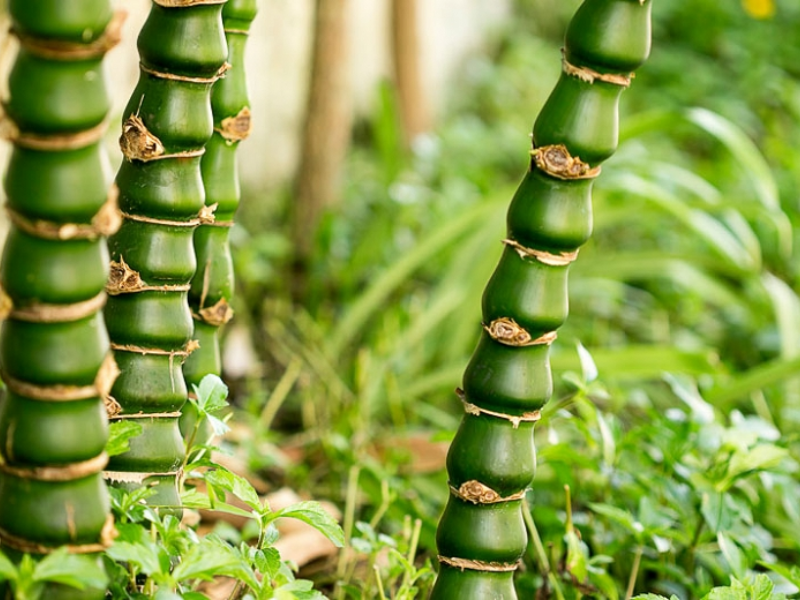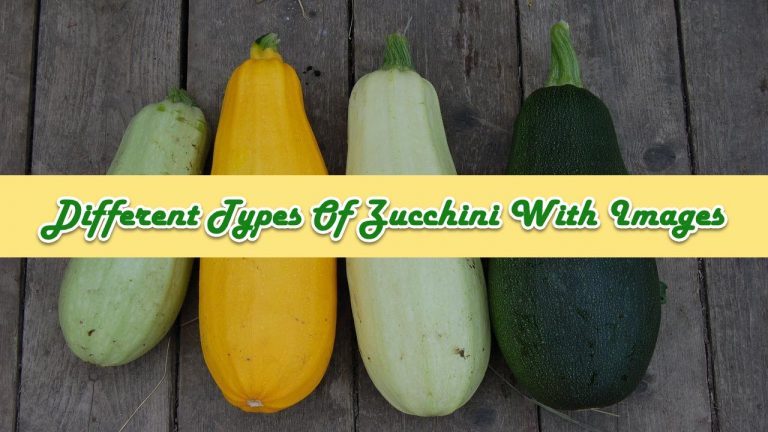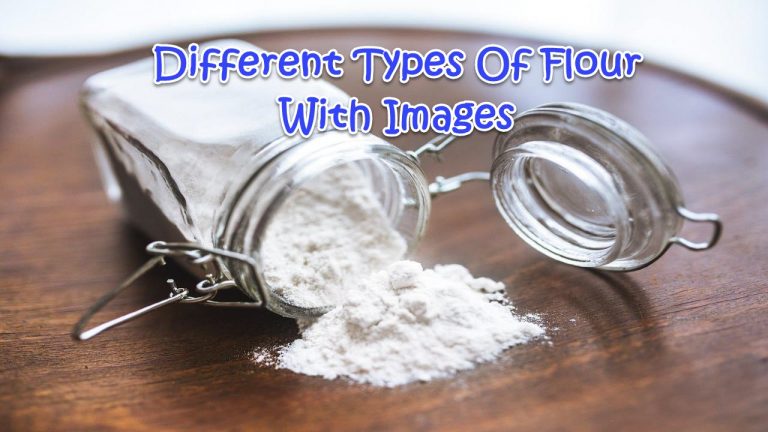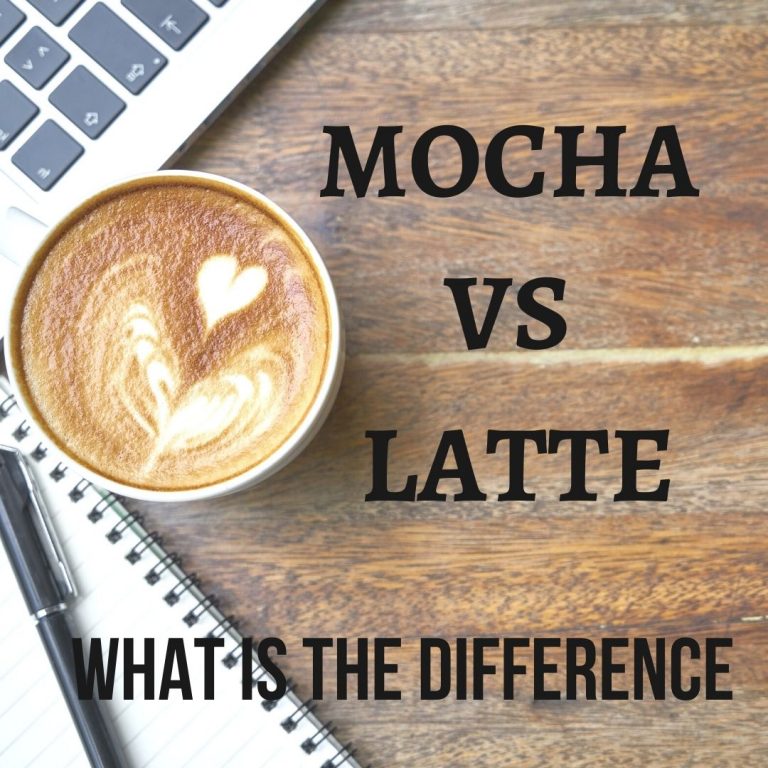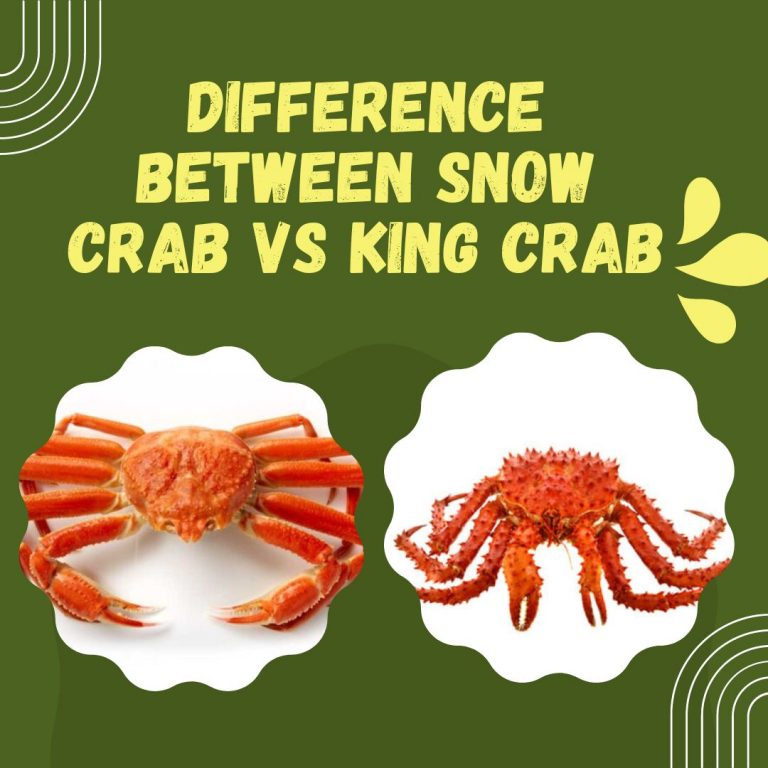22 Different Types of Bamboo Plants With Images
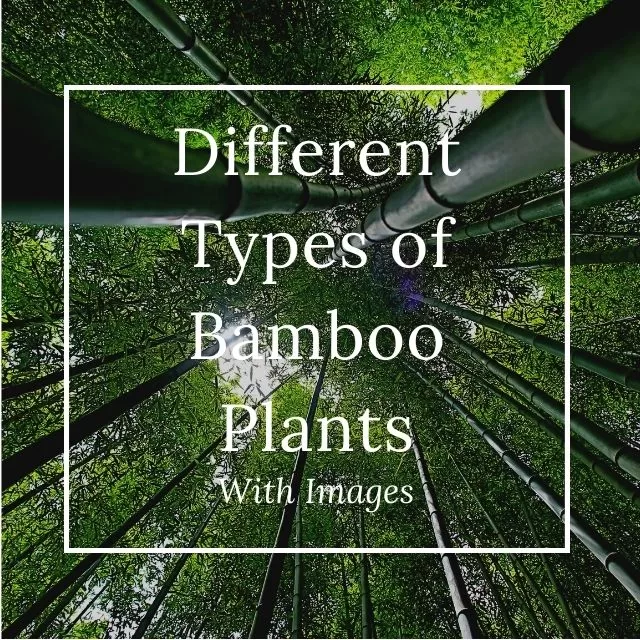
Bamboos are among the most majestic plants in the world. They are not just beautiful, but they serve many purposes — from serving as a shelter to animals to becoming strong construction materials for homes.

It’s quite interesting to note there are different bamboo varieties. According to studies, there are more than 1,600 bamboo species. Each type has its unique characteristics. Thus, if you’re growing bamboo plants, you should know your options.
Thankfully, you don’t have to go elsewhere. In this post, let me share with you some of the best kinds of bamboo plants that will surely meet your needs.
Types of bamboo plants
What are bamboo plants?
Bamboo plants are a type of grass. However, some bamboo plants can grow tall and big. Thus, they are sometimes incorrectly referred to as “bamboo trees.”
As a type of grass, bamboo can grow faster than other plants or trees. Certain types of bamboo can grow as tall as 36 inches in just one day.

Two categories of bamboo plants
Bamboos are categorized mainly into two:
- Clumping bamboo – these bamboos have short roots and tend to stay in one place. Although they can still spread outwardly, they would rather be slow in doing so and tend to stay in one place through their discrete circular clumps.
- Running bamboo – as its name suggests, running bamboo can fill a huge space in just a short amount of time. Its extensive reach is made possible through its rhizomes, which are like long and horizontal roots.
Bamboos have many uses. It can be food, building material, shelter, and even a tool for reforestation. In various parts of Asia, it has cultural significance as well.
Some bamboos are referred to as timber bamboo. Like what was mentioned, bamboos are not wood. All bamboos are part of the grass family. However, this does not stop people from calling bamboo a tree or wood.
Nevertheless, certain types of bamboo are treated like timber. The term ‘timber bamboo’ refers to bamboos that can grow more than 30 feet in height and 3 inches in diameter. Some timber bamboos can impressively reach a height of more than 100 feet.
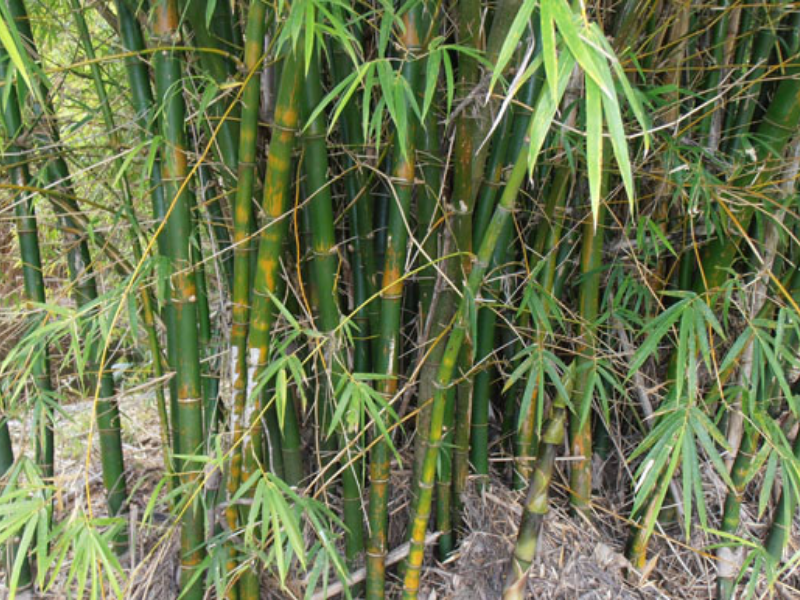
Common bamboo
The common bamboo, Bambusa vulgaris, is the most common type of bamboo. You have most likely seen this one in your area. Although this bamboo started in Indochina, it is now widely cultivated in other countries.
The common bamboo is strong and inflexible. Since it has a thick wall and crooked stem, it is difficult to split.
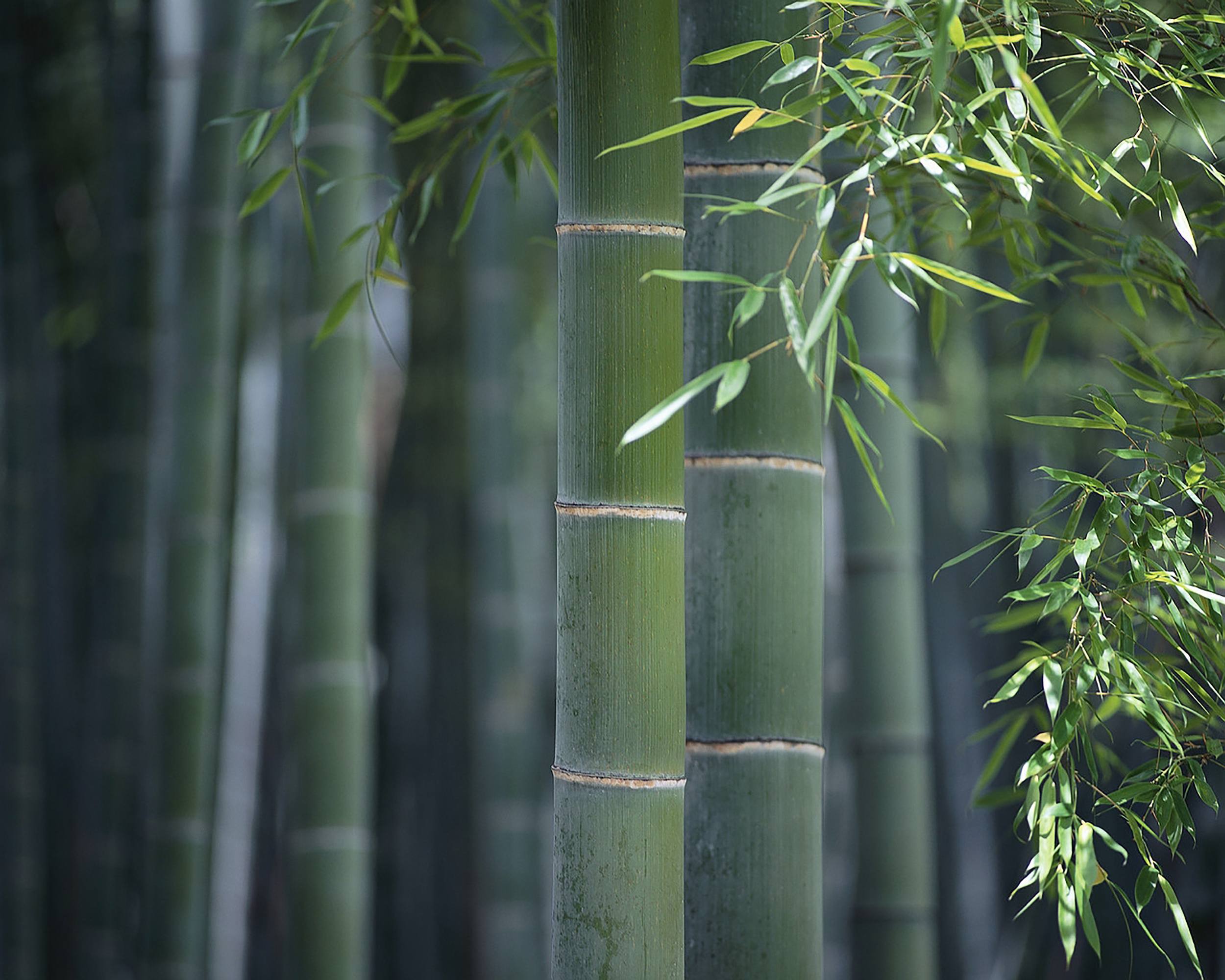
Moso bamboo
Moso bamboo is considered to be the hardest and densest type of timber bamboo. Thus, it is typically used for construction rather than decoration. Because of its strength, it’s a great material for plywood, musical instruments, flooring, furniture, fencing, and others.
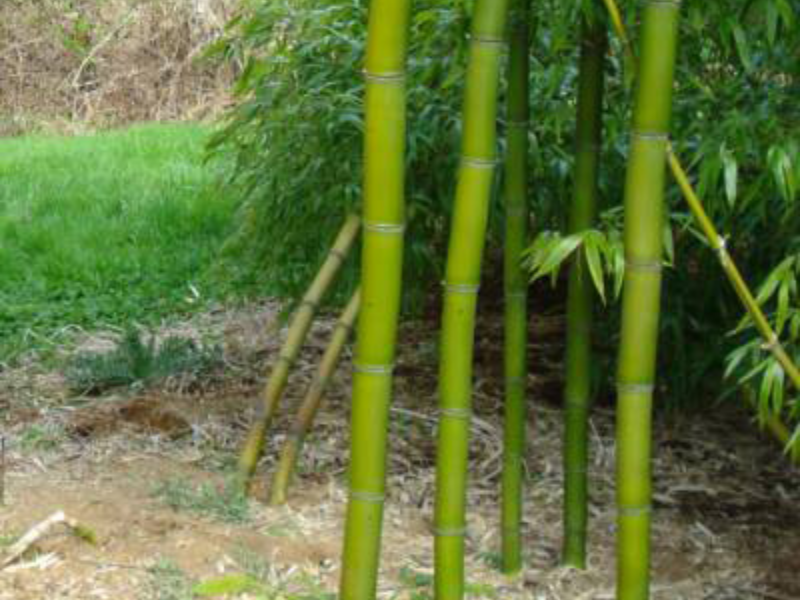
Chinese timber bamboo
This bamboo is native to China and can even produce flowers. It can grow as high as eight meters in height and 12 centimeters in diameter. On top of its body are drooping leaves that bring shades that cool the environment.
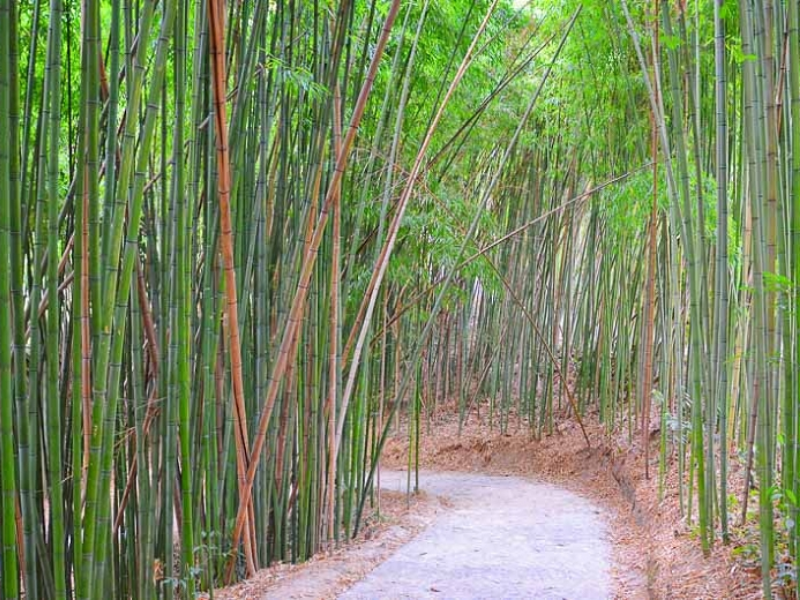
Japanese timber bamboo
Also known locally as madake, the Japanese timber bamboo is bamboo that originated in Japan. It’s a cold hardy bamboo — meaning, it can survive in cold places with a temperature of 20º F.
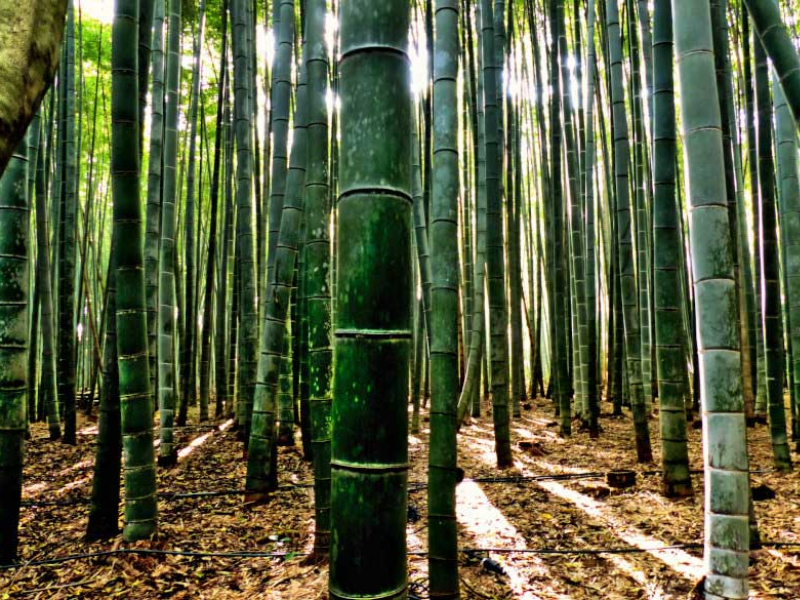
Japanese cane bamboo
The term Japanese cane bamboo is kind of a misnomer. The truth is that this bamboo species first appeared in China and was cultivated there. Eventually, it thrived more in Japan, where it attained more prominence. This is perhaps the reason that it is called the Japanese cane bamboo.
What sets Japanese cane bamboo apart from others is its smooth canes. When it matures, it develops these beautiful dark shades of green.
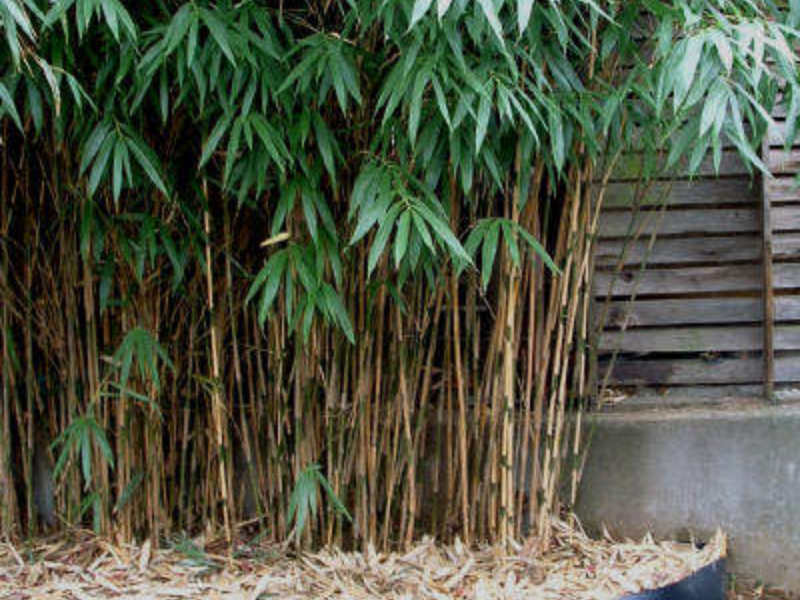
Japanese arrow bamboo
The Japanese arrow bamboo is a type of bamboo native to Japan. According to some historians, the arrow bamboo got its name from the custom of Japanese Samurai who used the stiff and strong canes of this plant to make arrows.
Although called the Japanese arrow bamboo, this plant is also native to some parts of the Korean peninsula. In Japan, arrow bamboo can easily be found in Kyushu and Honshu regions. Aside from Japan and Korea, the arrow bamboo can be found in Florida and Connecticut.
The Japanese arrow bamboo is also considered a cold hardy bamboo. This means this bamboo can withstand extreme cold weather. It grows best in places where there’s not much sun. The leaves look like a palm tree and they grow up to 13 inches. The yellowish-brown hue of the leaves makes it more attractive.
Moreover, arrow bamboo can easily live inside containers. Even if you expose it to salty air, it can still survive.
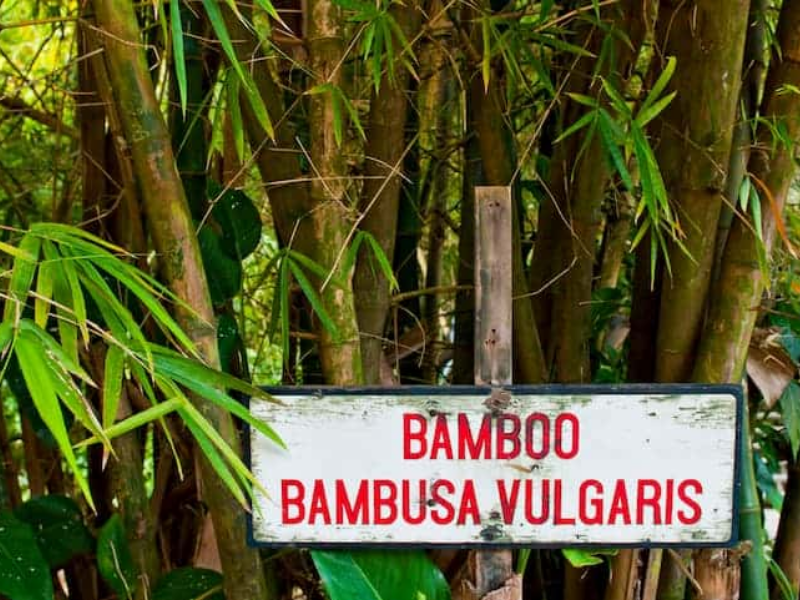
Painted bamboo
The painted bamboo got its name from its random markings on its golden canes. The markings are unique and you’ll rarely find the same patterns or designs.
The painted bamboo can reach a height of 60 feet. As it grows, it arches because of the leaves’ weight. The leaves look narrow and elongated that can stretch up to seven inches.
It’s worth noting that painted bamboo is used to control soil erosion. Because of its strong and compact root system, it can hold soil remarkably.
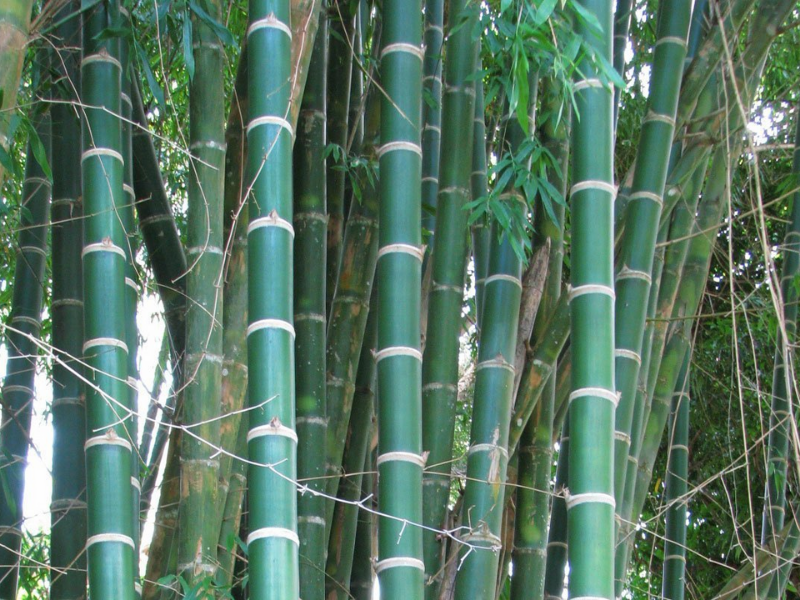
Giant Guadua
Guadua is a Columbian word, which refers to bamboos. Sometimes, it is simply called the Colombian timber bamboo. However, the giant Guadua can also be found in Uruguay, Northern Mexico, and Trinidad.
The giant Guadua plays a vital role in the ecosystem. Its leaves are important food for wild animals and insects. In Ecuador, giant Guadua is commonly used in constructing houses especially in the coastal regions and places near rivers.
Regrettably, the giant Guadua dwindles in number. Even in the Ecuadorian forests, you may have difficulty finding them. Local government officials encourage people to use giant Guadua more responsibly and sustainably to save it from extinction.
The giant Guadua produces beautiful, straight, and strong bamboo that can grow up to 25 meters. You can enjoy watching it grow before you cut it down for timber. This bamboo thrives best in tropical and subtropical places.
As you can imagine, the giant Guadua is a huge bamboo plant. It takes about five years for this bamboo to mature and after nine years, its growth will stabilize. If you have the space and the time to spare, you can certainly choose giant Guadua as a bamboo plant in your home.
When handling Guadua bamboo, be careful of its tiny thorns. It can be very itchy and pointed that it may prick your skin.

Giant bamboo
Also known as Dragon Bamboo, the Giant Bamboo is a clumping species that grows in tropical and subtropical countries such as Myanmar, India, Laos, and China. Because of its height, it is considered to be one of the tallest bamboos in the world.
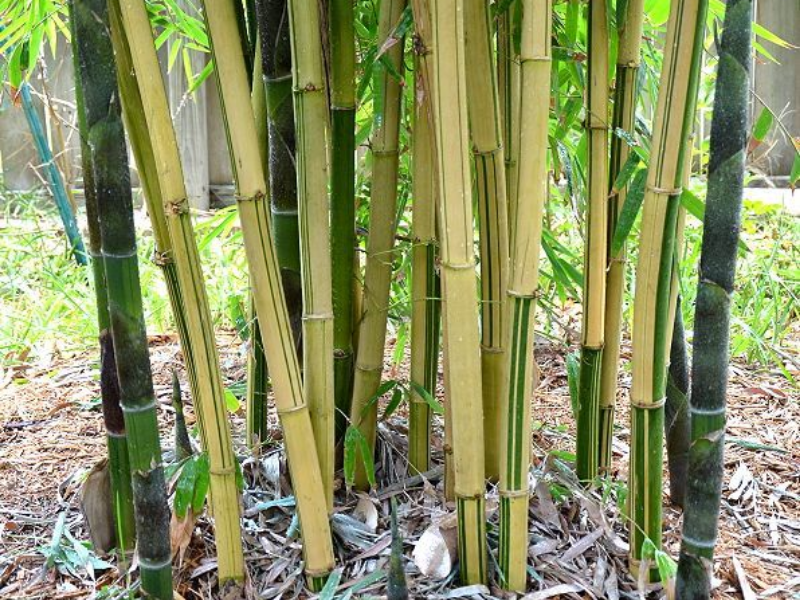
Yin Yang bamboo
Yin Yang is a Chinese religious and philosophical symbol. Since bamboos are closely related to serenity and peace, it is not difficult to see how one type of bamboo is called the yin yang bamboo.
The yin yang bamboo looks serene with its beautiful yellow stripes as it grows to 30-35 feet. Its leaves dance and ruffle through the wind, creating a calming sound.
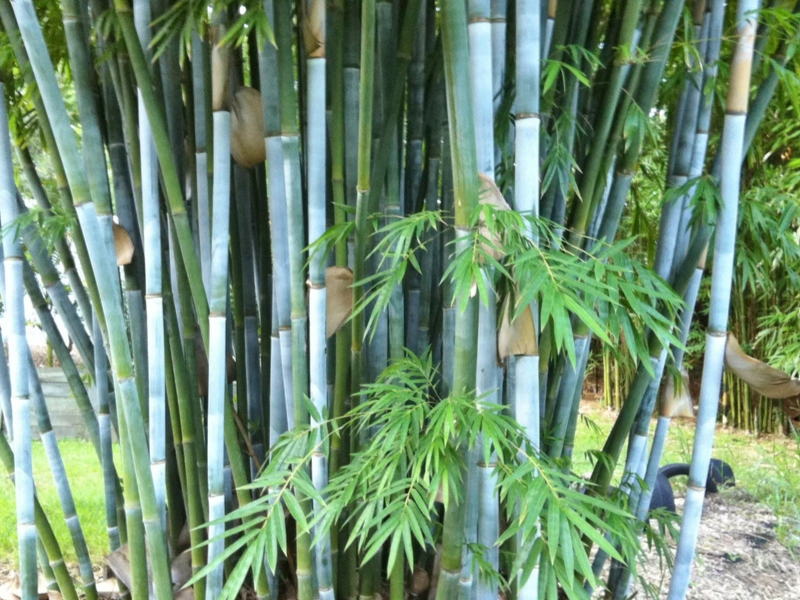
Blue timber bamboo
Blue timber bamboo, also known as Bambusa Chungii, got its name from its blue-like color, especially concentrated at the base of its body. It can grow up to 30 feet when it reaches maturity.

Oldham’s bamboo
Oldham’s bamboo is the most common type of bamboo grown in the United States. It’s a giant timber bamboo that can grow up to 20 meters infused with densely growing leaves but short branches.
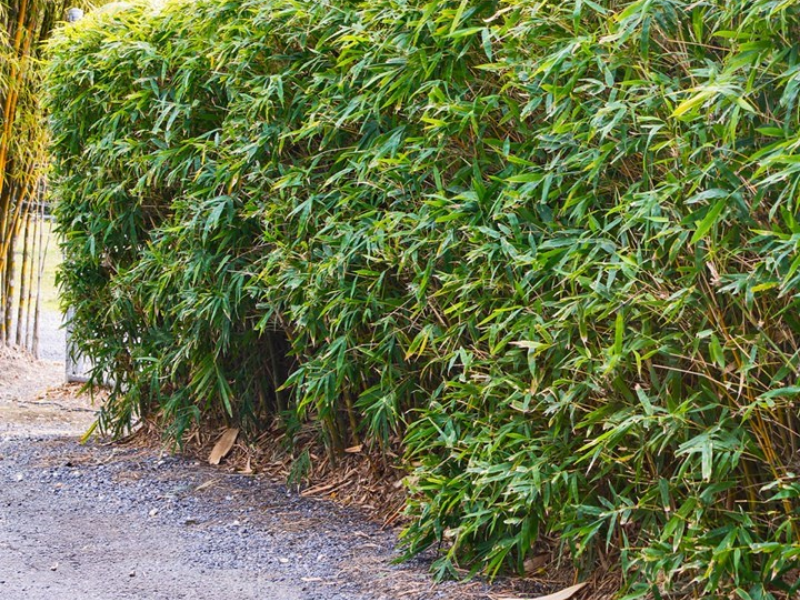
Chinese dwarf bamboo
The Chinese dwarf bamboo is commonly used as a privacy fence and decorations in gardens. The reason is that it has dense leaves. Typically, this bamboo can grow to 10 feet. However, some Chinese dwarf bamboos can grow up to 30 feet. Feel free to trim the bamboo leaves and stems down to your desired height.

Dwarf green stripe bamboo
The dwarf green stripe bamboo is a great choice if you simply want a hedge that doesn’t grow too big. The height of this bamboo is just half a meter, which you can also trim down to your heart’s desire.
Although it doesn’t grow high, it looks beautiful because of its luscious leaves, decorated with green and yellow stripes. The color of the leaves becomes more pronounced during spring and summer. As a running bamboo, you will be happy with how it will fill your garden.
The dwarf green stripe bamboo is native to China and Japan. However, it can now be seen in various places in East Asia, New Zealand, and even in Europe. The dwarf green stripe bamboo can endure extreme temperatures.
Please note that this bamboo sheds a lot of leaves all year round. So, if you are okay with cleaning your area more often or you don’t mind bamboo leaves falling all over the place, then this bamboo plant can be a good choice.

Chilean Bamboo
The Chilean Bamboo (Chusquea culeou) is an attractive bamboo plant because of its broom-like, light-brown flowers. It’s an evergreen bamboo, meaning the leaves stay green throughout the year. The flower blooming period of Chilean Bamboo can last up to 60 years. It will then eventually die after it has released its seed.
Native to South America, the Chilean bamboo can tolerate frost and adapt to temperate regions. This bamboo plant is abundant in the forests of Chile and Argentina.
One interesting trivia about Chilean bamboo is that it can control or affect forest dynamics. Because of its diverse root system, it can impede the regeneration of various trees in forests. Thus, this bamboo plant is routinely monitored by local authorities.
A typical Chilean Bamboo plant can grow up to eight meters in height and 1.5 meters in width. Its leaves are quite interesting as well. It has hairy lanceolate leaves, meaning it is long but its middle part is wider, making it appear like a lance. At the end of each leaf, you’ll find a spine.
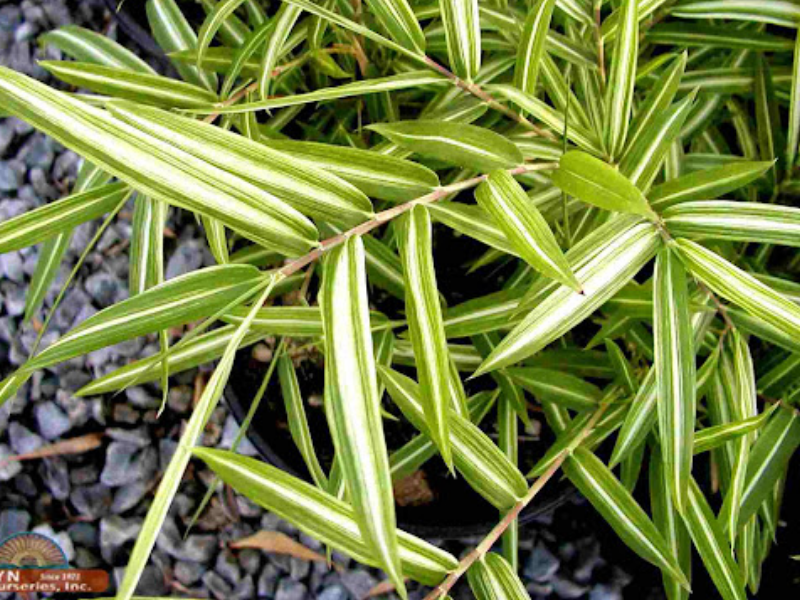
Pleioblastus ‘Tsuboi’
If you are looking for ornamental bamboo, this should be one of the first bamboo species in your mind. It is a great runner and it can easily grow in pots or contained planter beds. Because of its root barrier, it won’t invade other plants.

Slender weavers
The slender weavers are tall but thin, straight bamboos. It forms a beautiful clump as it rapidly grows into a botanical structure that can serve as a privacy hedge or screen. If you’re planning to use this as a fence, be sure to plant them 1 meter apart. Mature slender weavers can spread about 1 ½ wide. This should be enough to form a dense wall.
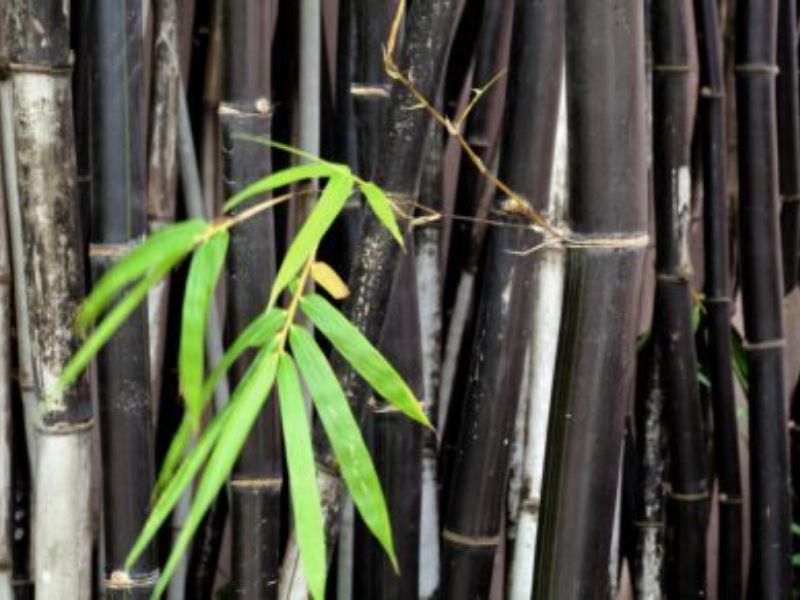
Timor black
This one’s a special type of black bamboo because of its color. When you look at Timor black, the culms look black but glossy at the same time. It looks strikingly elegant when combined with the green color of the leaves. You can plant this in pots and planter beds. Although, you can also use it in larger gardens.
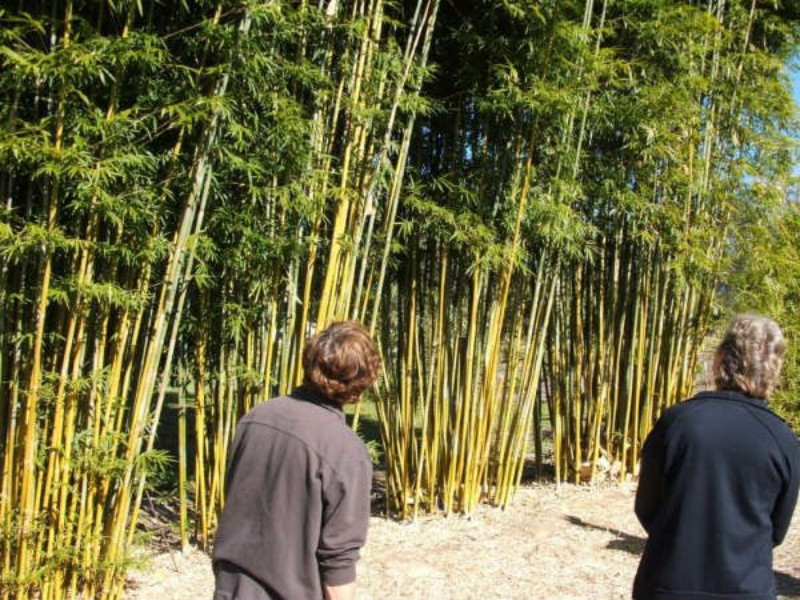
China gold
You’ll be amazed at how beautiful the China bamboo gold is when you see one. It has these perfect lines of green stripes on its culms in front of a bright yellow color backdrop. Sometimes, you may think it looks like golden sugar canes. Trim the lower branches and leaves to feature its beautiful culms.
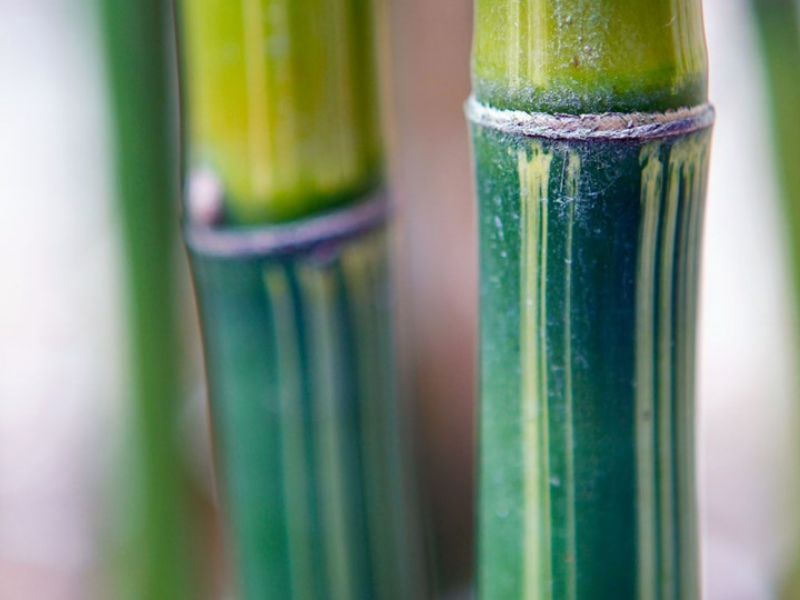
Gold Stripe bamboo
If you want to have a unique-looking bamboo in your backyard, you’ll be happy to choose the Bambusa ‘Gold Stripe’ bamboo. It can grow in narrow beds, which creates a clean, compact, and upright screen. Most people who have Gold Stripe bamboo would trim the lower branches. They do this to illuminate more the beautiful gold and green stripes on their culms.
Buddha bamboo
There’s a reason why this bamboo species is called Buddha bamboo. If you look into its base, there are lumpy nodes that remind you of the bulging belly of Buddha.
Buddha bamboos are primarily used for decorations. People commonly plant Buddha bamboos in small containers and place them inside and around their homes. If you choose this plant, be sure to keep its soil moist and fertile.
One thing that’s nice about the Buddha bamboo is it doesn’t spread too much. It stays where it is planted. So, it’s great bamboo as well in your backyard. As a tropical plant, it should thrive well in temperate and cool climates.
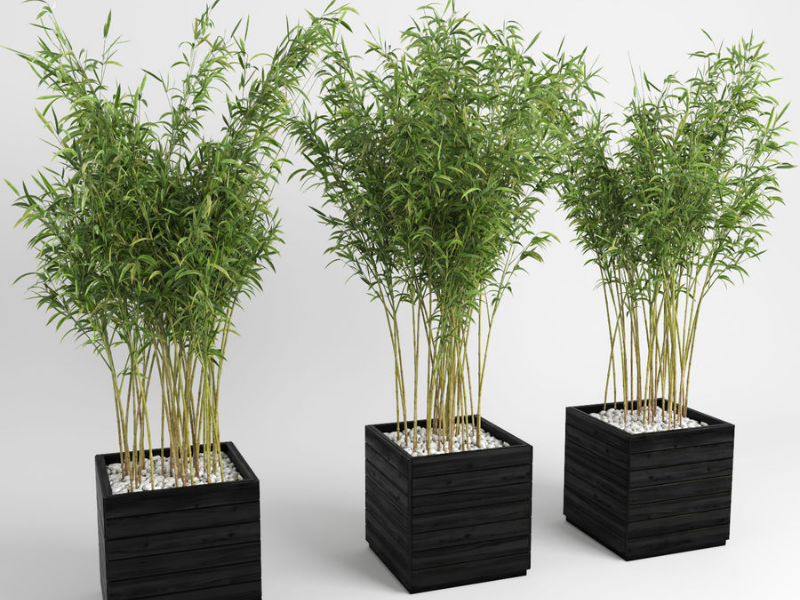
Umbrella bamboo
Umbrella bamboo looks like an umbrella because of its luscious leaves. It is a short bamboo tree that can easily be planted in pots and soil beds. As a non-invasive bamboo, it should stay in its place as it grows to maturity. This makes the umbrella bamboo one of the best indoor bamboo plants.
The good thing about umbrella bamboo is it can adapt to almost all temperatures, from cold to warm. The bamboo canes look greenish to yellowish. It has long and thin culms that are perfectly matched to its long and slender leaves.
If you’re planning to plant this bamboo plant around your home, choose a place that gets indirect sunlight. Too much sunlight can turn its leaves to brown. Remember as well that the umbrella bamboo can grow 4-5 feet in width and 10-15 feet in height.
A lot of people choose umbrella bamboo because it is super easy to grow and maintain. Even if you ignore umbrella bamboos for many weeks, they stay healthy. Above all, umbrella bamboos stay elegant and impressive all year round.
How to choose the right bamboo plant
As you can imagine, there are just so many types of bamboo. If you’re not careful, you might end up choosing the wrong one.
Factors to consider
When exploring your options, you need to consider the following:

- Purpose – every bamboo plant has its strengths and weaknesses. Some bamboos are best to serve as a building material while others are good to serve as ornaments.
- Weather – not all bamboos can tolerate cold weather. So, consider the weather in your area and see if it can sustain the life of your chosen bamboo.
- Appearance – some bamboos grow up straight, but others create foliage of leaves. Know the overall design you like before choosing your bamboo.
- Rhizome type – as discussed, bamboos can be running or clumping. Running bamboo is a good choice if you want a privacy fence or hedge. The clumping bamboo is a good choice if you want to build a cool shade in your home.
- Height and diameter – your bamboo will inevitably grow. The question is, “How high would you like it to be?” Consider as well how much space it will occupy.
Choose the best bamboo plants for you
These are just some of the most beautiful, unique, and popular types of bamboo plants. Now that you have read about them and even seen images of them here, you should have a better understanding of what they are.
Whether you are decorating your home and yard or constructing a table or chair, there are various types of bamboo plants that are just right. Explore your options and find the best one for you!
